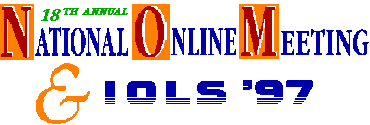The Internet has grown rapidly during the last few years and has made a
significant impact on our professional and personal lives. Creative
technology and revolutionary application proposals abound. Funds are
readily available to those with grand plans designed to reap fortunes
from the Internet and World Wide Web. What will the future hold? How
will this investment change our industry? How do we prepare for the
rapid changes that are anticipated? What can we look forward to after
the shakeout when financial reality strikes?
This Keynote will focus on these and other fundamental issues that our
industry must confront relative to the Internet. We will extrapolate
from the past and postulate future scenarios. A road map of milestones
and checkpoints will be discussed in order to focus our planning
initiatives. Most importantly, we will identify the core competencies
that we must develop in order to survive.
